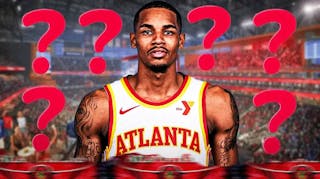‘The rich get richer’. This statement has never been more true than it is now — at least in the NBA. Over the past few weeks, the Brooklyn Nets and the Los Angeles Lakers, two teams that many pundits have ruled as the heavy favorites to meet in the NBA Finals, made rather intense roster additions to supplement their talent. Now, of course, teams all over the league are making moves this time of the year. The trade deadline is always teeming with player movements, while contenders are shoring up their rosters and basement-dwellers are freeing up cap space for the offseason.
But an oft-forgotten area of the NBA landscape has taken center stage this season in a way that has never been quite as seen before: the buyout market. But why?
Sports Illustrated‘s Howard Beck breaks it down:
“Every season, teams try to unload unwanted veterans via trade, before the scheduled trade deadline. When those efforts fail, the team and the player arrange a buyout…The bought-out player is then free to chase rings, shots or warmer weather—or sometimes, all of the above—usually by signing for the veteran’s minimum salary. His old team saves a few dollars, opens a roster spot and makes room for younger players to get reps. His new team gets a boost for the stretch run at relatively little expense.”
That last bit is what has been concerning smaller market teams, as this year’s buyout market has been unusually fruitful, particularly for the Nets and Lakers. A key part about this unofficial little window of the NBA season is that teams seeking to sign players for the veteran’s minimum salary can do so without worrying about the NBA’s salary cap. So essentially, if the right veterans are available, and the team’s owner can afford the cost, a contender can sign anyone off waivers for pennies on the dollar.
It started a few weeks ago when Brooklyn was able to acquire former All-Star Blake Griffin after the Detroit Pistons put him on waivers. More recently, the Spurs bought out another former All-Star in LaMarcus Aldridge. Moreover, the Lakers signed 27-year-old big man Andre Drummond after he was bought out by the Cleveland Cavaliers.
The concern to small teams is that without this little loophole, neither Brooklyn nor Los Angeles would be able to sign either player under normal circumstances, as they are both well over the NBA’s salary cap for the season. But because of the buyout period and the unique rules governing veteran’s minimum salaries, both teams were able to not just sign the three former All-Stars, but do so for almost nothing salary-wise.
Take Drummond, for example. Compared to the other two, he is relatively young and has led the NBA in rebounds for over half a decade to date. His Cavaliers salary this season was $28.8 million. After buyouts, the Lakers signed him for $800,000.
Said a small-market executive:
“It’s a definite concern…Without a doubt, players…entering the buyout market will only be looking at contending teams…bigger markets…and it gives teams an opportunity to sit back and add players on minimum deals that they normally wouldn’t be able to acquire.”
For context, Griffin and Aldridge have a combined 13 All-Star appearances and were owed almost $100 million over the next two seasons. Granted, they are still capable double-digit scorers and rebounders, no team would be willing to pay that much for one of them, let alone both.
But after buyouts, Brooklyn acquired both for just $2.1 million.
This season’s buyout market might be the most highly-publicized of all time. Contracts do tend to be bought out of course, but a midseason buyout market has always flown under the radar. These actions are primarily saved for the summer months.
But if these moves prove to be successful, that is if either Brooklyn or LA wins the day in the end, this could change the landscape of player movement in the league for the foreseeable future.
Well, at least until it gets stamped out in 2024 with a new collective bargaining agreement.




